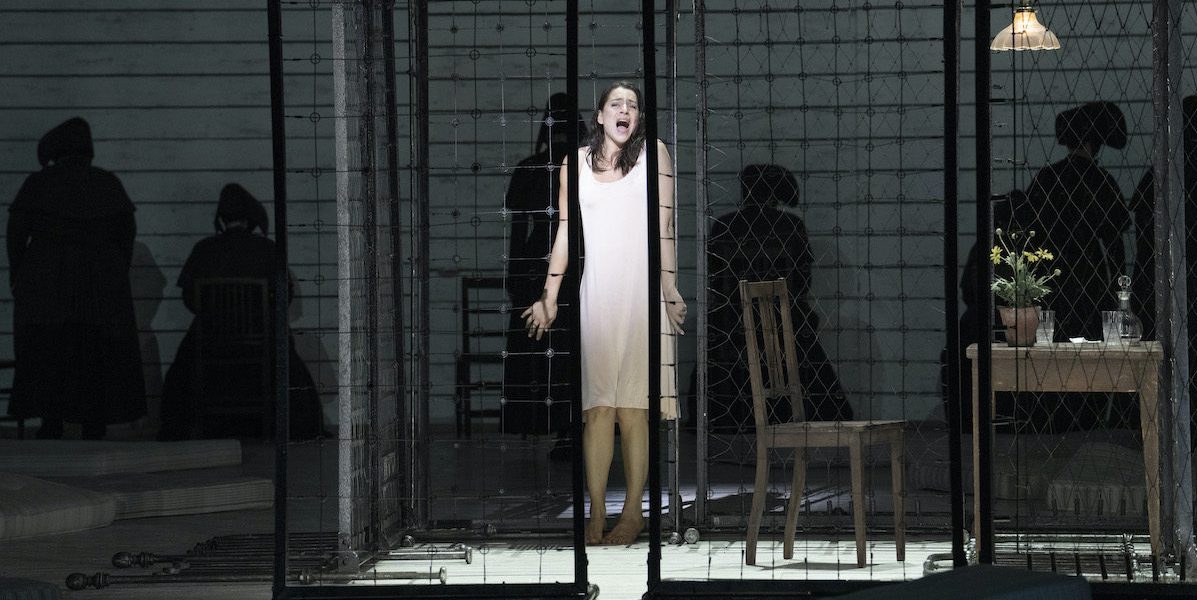Jenůfa (1904) is Janáček’s first mature opera, but still underperformed in comparison with the five masterpieces that follow it. Though there are still musical and melodramatic influences from Tchaikovsky within its textures, it already bears the hallmarks of his mature style. Romantic and erotic tensions gather to an inevitable fraught and destructive catharsis, with surrounding pressures from an oppressive community that does not tolerate outsiders; but with moments of rapturous lyricism which sweep away the prevailing pessimism with a more cheerful vision of harmony between man and nature.
This opera takes its plot from a play (and later novel) by Gabriela Preissová focused on the relationship between a daughter and her stepmother. The daughter becomes pregnant by her cousin, and much of the action is dictated by her stepmother’s determination to free her from the social disgrace that this entails. But the price of kow-towing to convention involves transgression of a far more murderous kind with disastrous consequences for everyone involved.
On a musical level this is truly a peerless production with no weak links in the cast and conducting and playing of exceptional power and artistic integrity. The ovations at the end of the first night were among the most intense and long-lasting I have heard at Covent Garden, and deservedly so. The production concept and execution, while clear and powerfully executed, was however less uniformly successful.
In the lead roles of Jenůfa and her stepmother, the Kostelnička or Sacristan, Asmik Grigorian and Karita Mattila presented exceptional and deeply moving portrayals. Jenůfa is a hard role to integrate, containing both passive and assertive elements, passive victim and feisty independent woman. She is also remarkably forgiving of all the heinous crimes committed against her, which is hard to make credible. In a beautifully poised yet affecting performance Grigorian assimilates and embodies all these elements convincingly which makes the final denouement in which she manages to forgive the unforgiveable all the more moving.
Mattila’s portrayal is just as fine-grained. In some productions the Kostelnička is simply depicted as a monstrous harridan; but here in a superlatively detailed example of singing and acting Mattila takes us to the heart of her dilemma – able to see through and beyond the fake morality of provincial society, she cannot transcend it despite wishing to save her daughter from the same fate that ruined her own youth. We are made to feel her pain and suffering just has keenly as the pain and suffering she creates herself.
The two main male roles are neatly contrasted: Saimir Pirgu is all Italianate charm and swagger, just like the Duke in ‘Rigoletto’, and plays Števa, the wealthy heir to the local mill with a similar shallow selfishness. It is an ungrateful role, but he delivers it with panache. As Laca, his petulant and neglected half-brother, Nicky Spence shows the growth of the character, under the guidance of Jenůfa’s selfless example, and sings with intelligence and radiance in the opera’s closing pages.
It is a great night in the pit. Conductor Henrik Nánási has the measure of the shifting moods of this tricky score (here performed in the original version, stripped of later ‘improvements’ by others), and summons playing of rare delicacy and confronting force from his players. Far from just being an underscore the orchestra often leads and introduces the action as a separate character.
The production by Claus Guth seeks to avoid literalism and find abstraction and universal points of view. At points this succeeds admirably but at others it detracts from what is already in the music. Each act opens with the action closed off behind a fence, a useful device to emphasise the oppressive nature of this local community. But the second act is marred by heavy-handed symbolism as an actor with a raven’s head clambers out of the heroine’s nightmare and all over the set, while onlookers dressed in black and hooded in the manner of ‘The Handmaid’s Tale’ hover around the action. Less would be more.
The final act, however, works well on the production side. The gaudy pomposity of the folk wedding is well achieved as bright colours suddenly return to costumes and set. Moreover, the final scenes are played out with a restraint and simplicity which allows the music to take over and flood the senses with Mattila’s final reckoning with the consequences of her actions, and the possibility of hope and escape into a better future for Jenůfa

